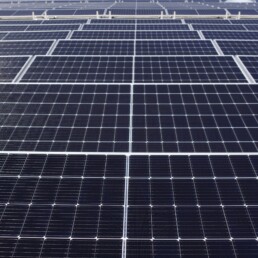Overview
The decision California has been awaiting for the last 2.5 years from the state’s public utilities commission (CPUC) has finally been adopted, as of Thursday, December 15, 2022.
Net energy metering (NEM), the regulatory framework for the value of onsite solar energy, has been revised to lower the value of the bill credits for excess solar energy that is exported to the grid. The new framework (NEM 3.0) significantly reduces potential financial savings for new solar and storage projects that file interconnection applications with the utility after April 14, 2023.
What does this mean for California’s public agencies?
- Agencies that act quickly on new solar and storage projects can secure 20 years of legacy rates under the soon-to-expire NEM 2.0 rates that offer higher financial savings.
- New solar and storage projects that submit interconnection applications after April 14, 2023 will be subject to the far less lucrative NEM 3.0 rates—up to millions of dollars in savings lower on the same exact system when compared with NEM 2.0 rates.
- In this final push toward public agencies submitting interconnection applications by April 14, 2023, every day counts. Agencies interested in adopting solar (or solar-plus-storage) over the next 5-10 years will want to act quickly to secure NEM 2.0 rates.
Fortunately, a California Joint Powers Authority (JPA) issued a competitive RFP on behalf of public agencies and awarded ForeFront Power as the exclusive winner to offer solar and energy storage projects. As a result, ForeFront Power is prepared to work quickly to expedite the NEM 2.0 application process for agencies looking to move forward with solar and/or storage projects to maximize their agency’s savings over the next 20 years.
“Agencies interested in adopting solar (or solar-plus-storage) over the next 5-10 years will want to act quickly to secure NEM 2.0 rates.“
What is Net Energy Metering?
Net Energy Metering or NEM refers to a utility bill credit for excess energy produced through on-site solar energy. As the meter “spins backward,” the solar facility reduces electricity bill costs for entities who have taken the step to procure solar energy.
This regulatory incentive was enacted to incentivize homeowners, businesses, and public entities to generate their own greener sources of energy. The exported solar power rate in this incentive was reduced slightly in 2016 in an iteration commonly referred to as “NEM-2” or “NEM 2.0.” This latest update (“NEM 3.0” or “NEM-3”) is significant enough that future on-site solar projects may no longer offer a cost savings to entities who install on their premises.
What Exactly Are the Changes under NEM 3.0?
The most significant changes under NEM 3.0 center around the following:
Future compensation for exported solar energy will no longer be tied to retail rates (prices at which one buys energy from the utility), but rather to the latest iteration of the Avoided Cost Calculator (ACC). The ACC is a tool designed to assess the value of avoided cost to utilities for each new addition of distributed energy infrastructure. NEM 3.0 applies this latest iteration of the ACC as the solar export rate (rather than the retail rate), resulting in a significantly decreased value from what is currently available.
Under NEM 1.0 and 2.0, electricity export value was guaranteed to be secured for up to 20 years from the time of the solar system’s interconnection application filing. Under NEM 3.0, export rates on new projects are locked in for only nine years into the future, after which point rates will be recalculated annually as CPUC updates its Avoid Cost Calculator. Visibility into what rates will be at the time of these annual recalculations is uncertain, adding significant risk to any solar investment.
NEM 3.0 involves a true decoupling of electricity imports and solar exports. Whereas the current program “nets” customer production against grid consumption within 15-minute billing intervals, this new system of “net billing,” as it’s being referred to, will do so instantaneously. This means that a customer pays the (higher) retail rate for every single electron imported from the grid and is compensated at the (much lower) ACC rate for every single electron exported to the grid. This net effect of this change is further reduced savings.
Taken together, this makes it extremely challenging to have certainty of the potential savings for any new on-site solar energy systems.
“Public agencies are recommended to act swiftly to submit interconnection applications before April 14, 2023, after which point all new systems will be subject to less favorable NEM 3.0 rates.“
Who Is To Be Affected by The Switch to NEM 3.0?
The changes to NEM policy apply to electricity customers of the three investor-owned utilities falling under CPUC jurisdiction, including:
- Pacific Gas & Electric (PG&E)
- San Diego Gas & Electric (SDG&E)
- Southern California Edison (SCE)
By When Would My Public Agency Need to Act?
The deadline to submit an interconnection application is Friday, April 14, 2023, and there are several preliminary steps to complete. For this reason, public agencies are urged to act quickly to maximize the opportunity window. An experienced partner like ForeFront Power can help an agency quickly navigate this array of details.
How can a public agency submit an interconnection application?
ForeFront Power is prepared to help public agencies looking to submit an interconnection application do so successfully. However, our team will need a few inputs from your team.
Utilizing your historical electricity bill data, our team of experts design a solar and/or storage program from top to bottom, including system design, savings modeling, and all other necessary components. Once that is complete, our team of interconnection and utility experts complete applications on your agency’s behalf.
While this is typically a process that can be somewhat protracted, we’ve staffed up and are working around the clock to ensure that entities who are willing to act quickly to seize this final window of opportunity are able to secure up to 20 years of savings through the installation of clean energy systems on their premises.
The Advantage of a Piggybackable RFP
More than 60 public agencies in California—including schools, colleges, cities, counties and other public organizations—have piggy-backed off this JPA’s RFP to benefit from lower solar pricing and favorable contract terms that lower project risks.
Through a competitive RFP involving seven developers, ForeFront Power was selected as the exclusive developer for all public sector contracts, thanks to ForeFront Power’s financial stability, pricing, experience, and references.
Have Questions?
Schedule your quick exploratory call today to uncover your agency’s potential savings profile and whether it is possible to secure legacy rates in this final hour.
ForeFront News
November 18, 2024
Penske Truck Leasing Lights Up New Solar-Powered Facility Initiative
October 23, 2024
Building Solar and Minds with Bakersfield College
September 26, 2024
Rafiqui is born, the first solar panel recycler in Mexico
Interested in learning more?
We would love to discuss how our solutions might be a fit for your organization. Contact one of our solar, storage, or e-mobility experts today:







